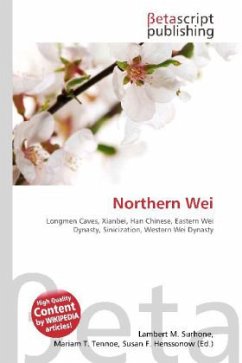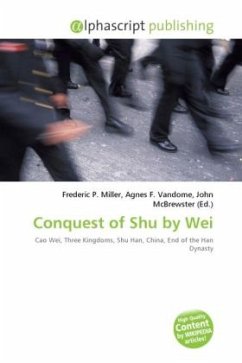Please note that the content of this book primarily consists of articles available from Wikipedia or other free sources online. The Northern Wei Dynasty, also known as the Tuoba Wei, Later Wei, or Yuan Wei, was a dynasty which ruled China from 386 to 534. It has been described as "part of an era of political turbulence and intense social and cultural change". It is perhaps most noted for the unification of northern China in 439, but was also a period when foreign ideas were introduced, and Buddhism became firmly established. Many antiques and art works, both Daoist and Buddhist, from this period have survived. During the Taihe period under the Emperor Xiaowen, court advisers instituted sweeping reforms and introduced changes that eventually led in 494 AD to the dynasty moving its capital from Datong to Luoyang.
Bitte wählen Sie Ihr Anliegen aus.
Rechnungen
Retourenschein anfordern
Bestellstatus
Storno








